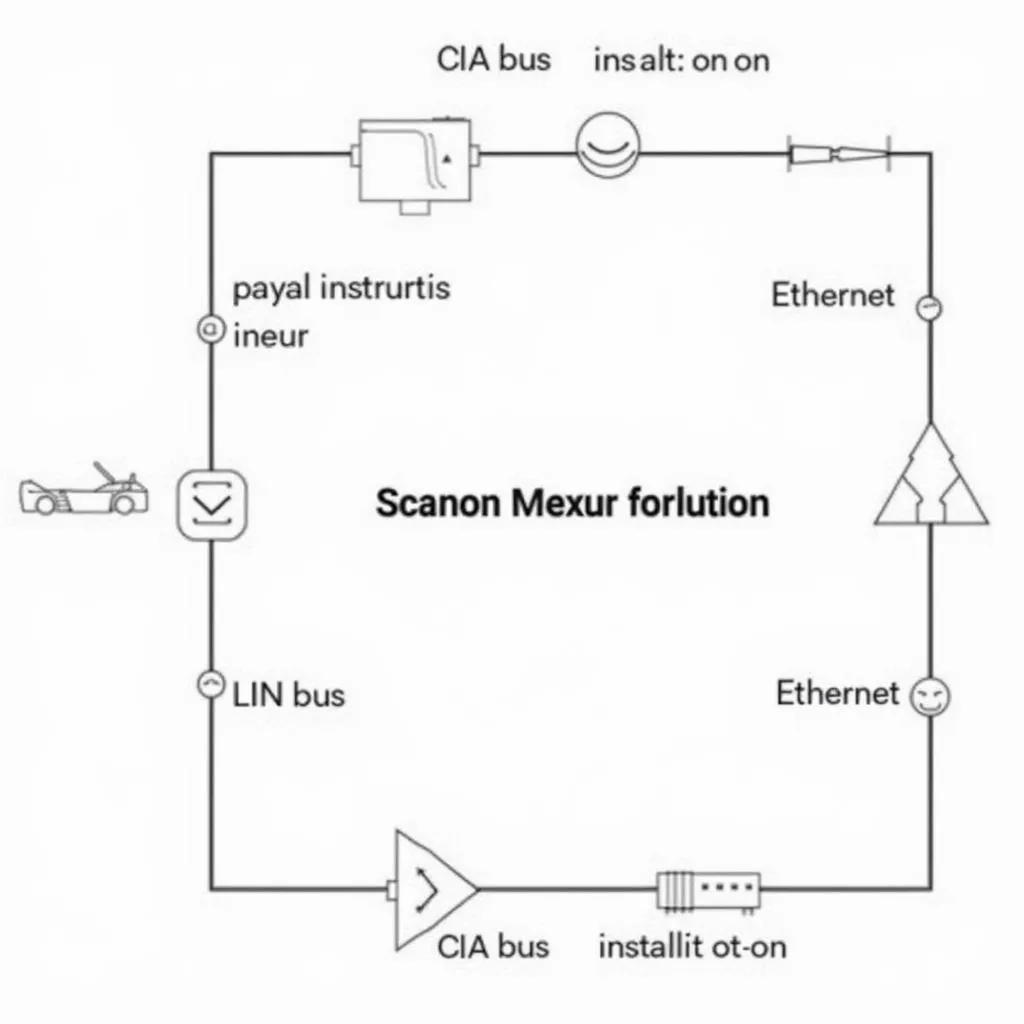The scan tool net port, an integral component of modern vehicles, plays a crucial role in accessing and interpreting your car’s internal network. This article delves into the significance of scan tool net ports, their functionality, and their importance in automotive diagnostics.
 Connecting a scan tool to the net port
Connecting a scan tool to the net port
Deciphering the Scan Tool Net Port
The scan tool net port, often integrated within the OBD-II port, serves as the gateway for communication between your vehicle’s electronic control units (ECUs) and external diagnostic equipment, such as scan tools. ECUs manage a myriad of vehicle functions, from engine performance and emissions control to airbag deployment and anti-lock braking systems.
Think of the scan tool net port as a specialized communication hub. It allows mechanics and technicians to tap into the vehicle’s internal network, retrieve diagnostic trouble codes (DTCs), monitor live data streams from various sensors, and even reprogram certain modules.
Importance in Automotive Diagnostics
The scan tool net port has revolutionized automotive diagnostics, enabling faster and more accurate troubleshooting. Here’s why it’s crucial:
- Pinpointing Problems: DTCs retrieved through the scan tool net port provide valuable insights into the nature and location of vehicle malfunctions.
- Real-Time Monitoring: Observing live data from sensors (e.g., oxygen sensors, mass airflow sensors) allows for a dynamic understanding of engine performance and other critical systems.
- Software Updates and Reprogramming: The scan tool net port facilitates software updates and module reprogramming, ensuring optimal vehicle performance and compatibility with evolving technologies.
Types of Scan Tool Net Ports
While the OBD-II port is the most common interface, the specific type of scan tool net port can vary depending on the vehicle’s make, model, and year. Some common types include:
- CAN (Controller Area Network) Bus: A robust and widely used communication protocol in modern vehicles.
- LIN (Local Interconnect Network) Bus: Often used for less data-intensive systems like power windows and door locks.
- Ethernet: Emerging as a high-speed communication protocol for advanced driver-assistance systems (ADAS) and infotainment systems.
 Various scan tool net port configurations
Various scan tool net port configurations
Choosing the Right Scan Tool
Selecting the appropriate scan tool is paramount for effective diagnostics. Factors to consider include:
- Vehicle Compatibility: Ensure the scan tool supports your vehicle’s specific communication protocols.
- Functionality: Determine the desired features, such as DTC reading, live data streaming, bi-directional control, and special functions.
- User Friendliness: Opt for a scan tool with an intuitive interface and clear data presentation.
“Investing in a high-quality scan tool with the right capabilities can save you time, money, and frustration in the long run,” says John Smith, a seasoned automotive engineer at a leading car manufacturer.
The Future of Scan Tool Net Ports
As vehicles become increasingly connected and autonomous, the role of scan tool net ports will continue to evolve. We can anticipate:
- Over-the-Air (OTA) Diagnostics: Remote diagnostics and software updates transmitted wirelessly through the scan tool net port.
- Enhanced Cybersecurity: Robust security measures to protect vehicle networks from unauthorized access.
- Standardization: Efforts to streamline communication protocols and enhance interoperability across different vehicle makes and models.
Conclusion
The scan tool net port is an indispensable component of modern vehicles, providing a critical link between a car’s internal network and the outside world. Understanding its functionality and importance empowers car owners and technicians alike to diagnose and resolve issues efficiently. As automotive technology advances, the scan tool net port will undoubtedly remain a cornerstone of vehicle diagnostics and maintenance.
FAQs
1. Can I use any scan tool on my car?
No, scan tools need to be compatible with your vehicle’s specific communication protocols.
2. What is a DTC?
A Diagnostic Trouble Code is a code stored in the vehicle’s ECU that indicates a specific malfunction.
3. Can I clear DTCs myself?
While possible, it’s recommended to have a qualified technician diagnose and address the underlying issue before clearing codes.
4. Are all scan tool net ports located within the OBD-II port?
While common, some manufacturers may utilize different locations or connectors.
5. Do I need a scan tool for regular maintenance?
While not mandatory, a scan tool can provide valuable insights into your vehicle’s health and potentially identify minor issues before they escalate.
Still Have Questions?
For further assistance or inquiries, don’t hesitate to contact our expert team through WhatsApp: +1(641)206-8880, Email: [email protected]. You can also visit us at 276 Reock St, City of Orange, NJ 07050, United States. We offer 24/7 customer support.
Explore our website for additional resources on port scan tool microsoft, tools for port scanning, and network port scanning tools. You might also find our articles on masscan port scanning tool detection palo alto and internet port scan tool informative.


